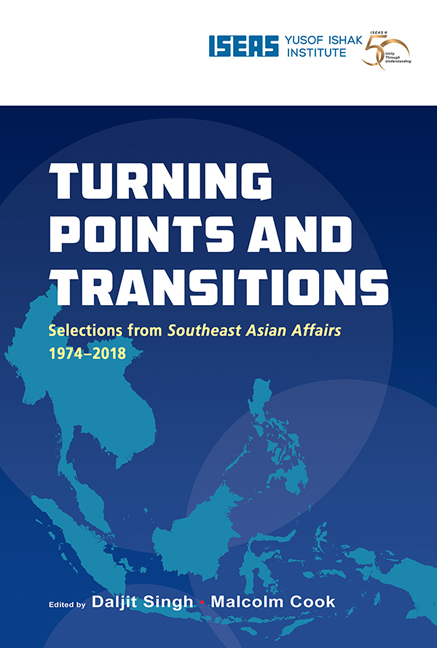Foreword
Published online by Cambridge University Press: 29 May 2019
Summary
The region now known as Southeast Asia has been called the Malay World, Malay Archipelago, Nusantara, East Indies, the Far East, and Southeast Asia or the ASEAN region. All these terms are still in use in various contexts for different purposes, quite often interchangeably, for instance, in books on the history of Southeast Asia available for undergraduate teaching across the globe.
The region physically includes mainland and maritime components. The “Malay World” is being used by a number of academic institutions and publications in Malaysia, Indonesia and the United Kingdom. Others prefer to use Nusantara, instead, the old Javanese terminology for “archipelago”. It refers to the maritime area of Southeast Asia. When British naturalists, explorers and biological scientists analysed the flora and fauna of the maritime region, they preferred to use the term “Malay Archipelago”. The French, German, Austrian and British orientalists of the nineteenth century refer to this maritime geophysical space as part of the Far East.
The term “Southeast Asia” that refers to the present mainland and maritime parts of the region was first used by American priest and educator Howard Malcom in 1837. During the Second World War, a century later, the Allied forces established a South-East Asia Command (SEAC) in 1943 that covered the areas previously known as the Dutch East Indies; British Burma, Malaya and Borneo; French Indochina; and Thailand. In 1944, the Washington D.C.–based National Geographic Society published the first map of Southeast Asia as we know it today, based on SEAC's military concept.
What is significant is that each of these names or labels for the region was constructed with different sets of knowledge content serving the specific purposes of whoever its originators were — imperialists, colonialists, researchers or academicians. The knowledge produced, based on empirical evidence derived from this region, often enriched the global discourse on a particular theory or concept.
For instance, the contribution of Alfred Russel Wallace (1858) was instrumental in establishing the “natural selection theory”, based on his eight-year research in the Malay Archipelago that was accepted and recognized by Charles Darwin himself. Similarly, the internationally well-known theory of “plural society” by J.S. Furnivall (1948), that was well received and applied widely in Africa and Latin America, was based on his research in Indonesia and Burma, which formed the empirical core of his theory.
- Type
- Chapter
- Information
- Turning Points and TransitionsSelections from Southeast Asian Affairs 1974-2018, pp. xiv - xvPublisher: ISEAS–Yusof Ishak InstitutePrint publication year: 2018



